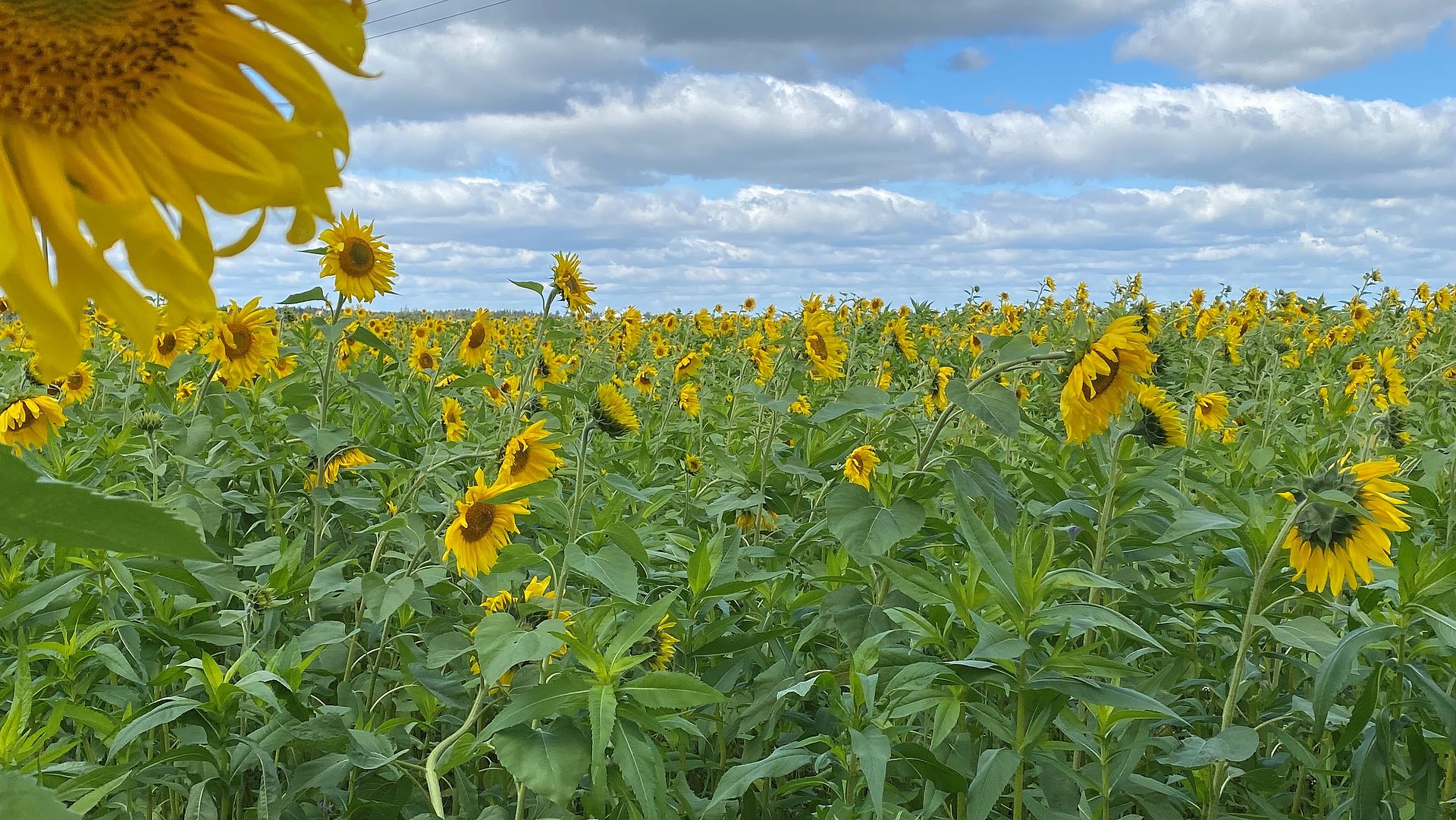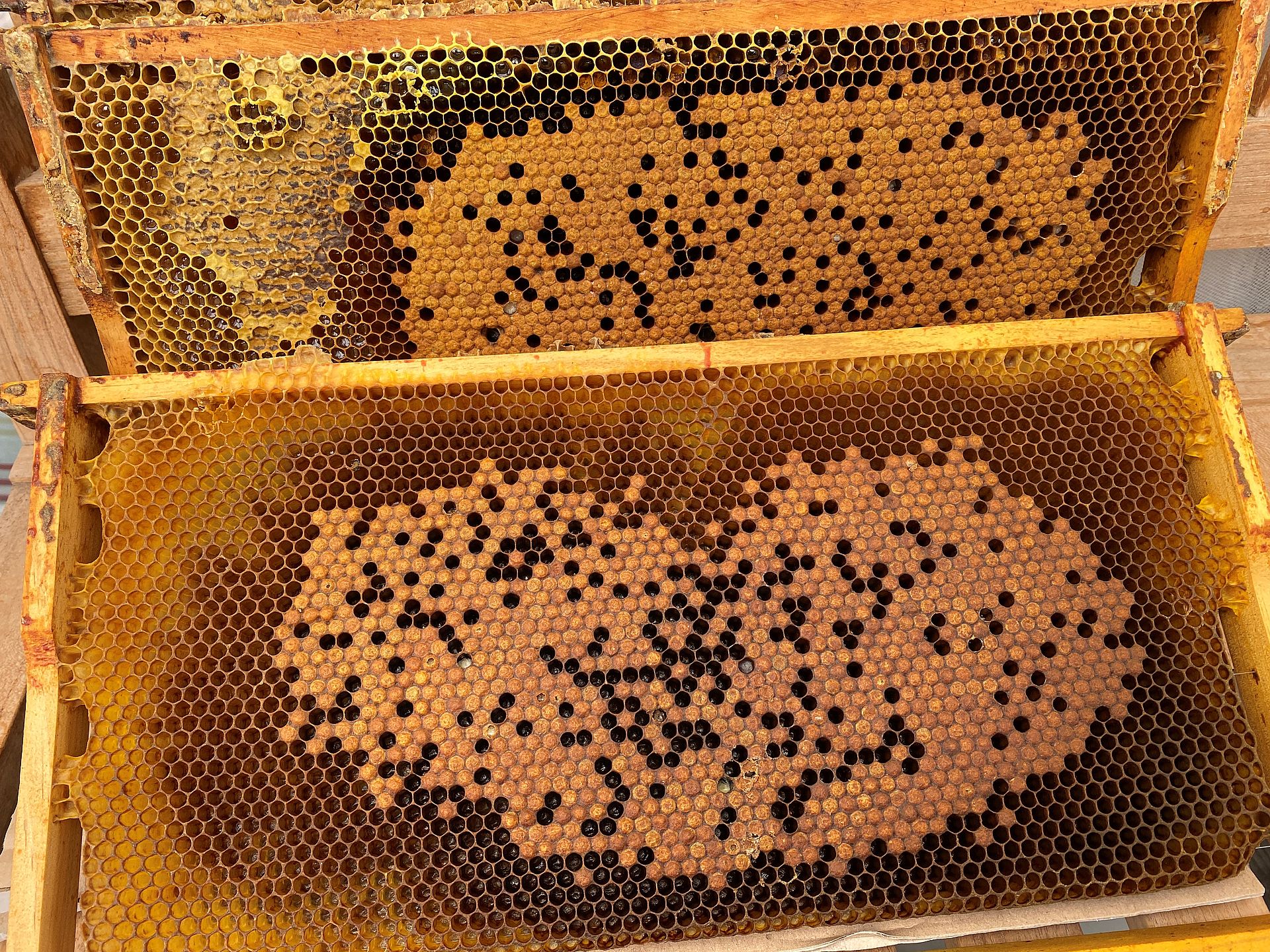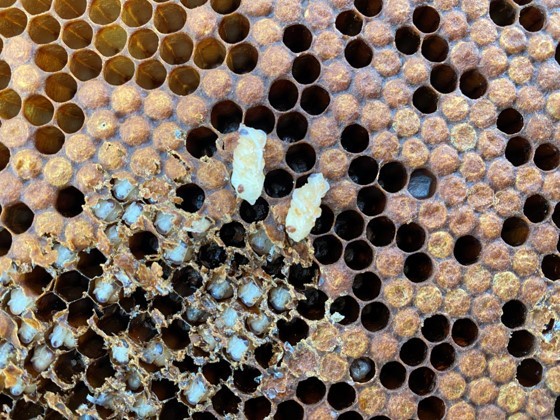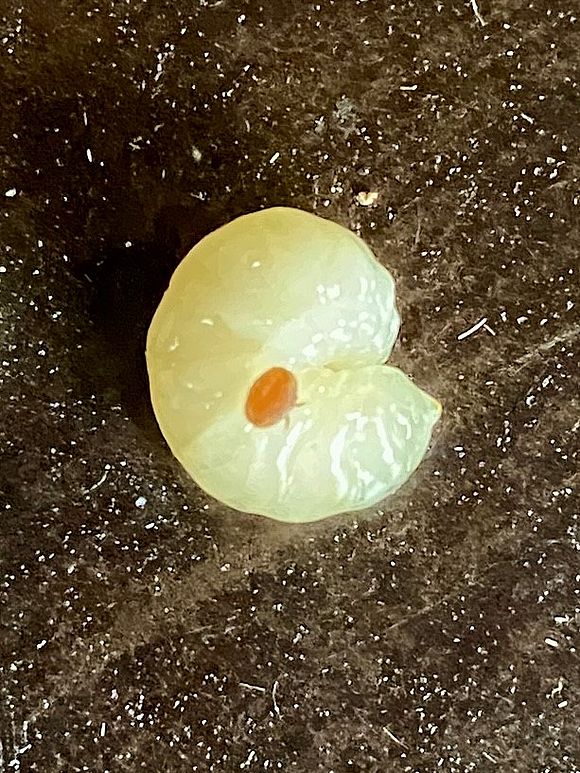Newsletter September:
We are already preparing for winter
Dear bee friends,
The bees have been preparing for winter again over the last few weeks. After the last honey harvest, when the lime tree has faded, the bees need to be freed from varroa mites. This way they can have healthy and long-lived winter bees with a healthy brood.
If there is also enough pollen from sunflowers or other late bloomers and nectar from balsam, we have created the necessary conditions for the time being.
I took the photo above on September 15 with my bees at the Holländer nursery. They always get fresh pollen from the beautifully planted wild flowers at the nursery anyway, but a field of sunflowers like this is certainly a welcome addition. Pollen is protein and, along with the glucose in honey or sugar, is the most important food for bee brood. Have you ever tried it? A tablespoon of pollen in muesli is an ideal supplement for us humans too. Proteins instead of sugar.
But back to the Varroa mite. It is visually comparable to a scale insect and lays its eggs in the brood cell. This means that most mites are also well protected in the brood cells and from intervention by the beekeeper. This year I carried out a total brood removal (TBE) again, which means that after the honey harvest I formed my own brood groups with already capped brood combs and bees. The original colony with the queen is therefore largely free of mites and can raise healthy winter bees.
Translated with DeepL.com (free version)
The brood broods draw a new queen from a young brood cell and thus form a new colony. By the time this queen lays eggs, however, all the brood has hatched and all the mites are largely unprotected on the bees. Now the beekeeper can either treat with oxalic acid or insert a so-called honeycomb with open brood. As the mites are desperate to reproduce, they will pounce on the brood in the honeycomb. Once this has been capped by the bees, I can remove it again and melt it down in the wax melter. In this way, the colonies are largely mite-free again without the use of acids or chemicals.
Hopefully that wasn't too specific.
If you want to learn more about the behavior of bees, I recommend an NDR talk show with Prof. Lars Chittka. I can share the link by e-mail if required.
In September, I also had the annual inspection visit from my certification body for the BIO seal. They check whether the beekeeper is complying with the organic guidelines and also advise him on what he could perhaps do better. Everything is in the green with me!
Many thanks to all bee sponsors and partners for their support!
Stay healthy and confident!
Your beekeeper
Michael Ruhdorfer




